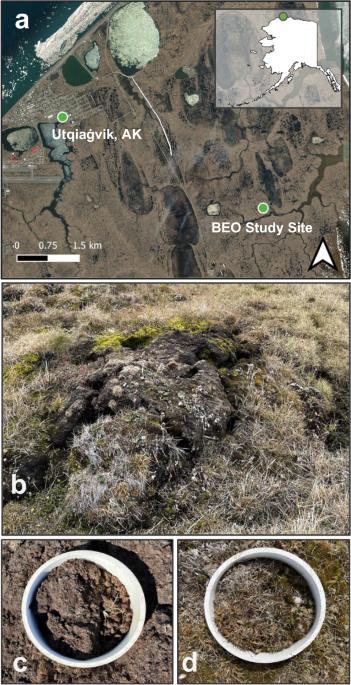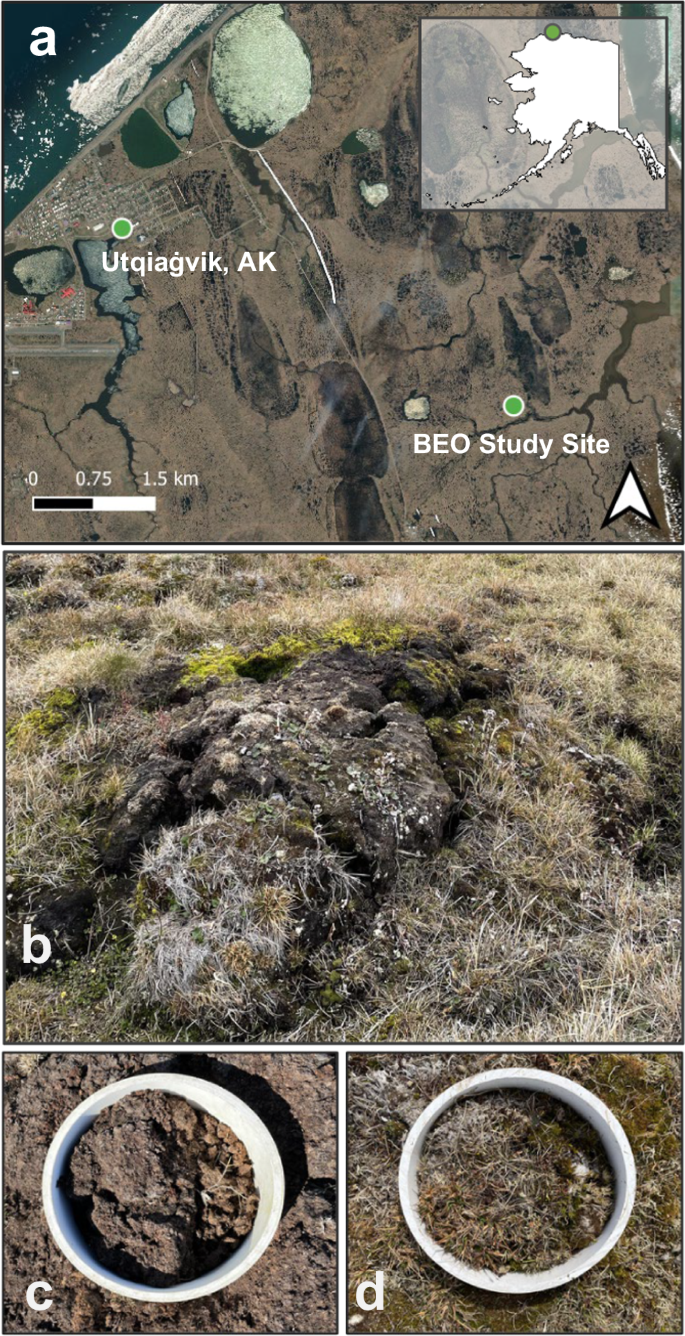阿拉斯加沿海多边形苔原的热卡地貌显示出大量氧化亚氮排放
IF 8.1
1区 地球科学
Q1 ENVIRONMENTAL SCIENCES
引用次数: 0
摘要
过去几十年来,全球大气中的一氧化二氮浓度一直在增加,新的研究表明,北极地区是一氧化二氮的主要排放地。热卡斯特过程、温度升高和排水系统的变化会导致多边形苔原地貌退化,从而形成高耸、排水良好、无植被的土壤表面,表现出大量的氧化亚氮排放。在此,我们概述了阿拉斯加北坡这些热卡地貌特征的排放量大小以及控制排放量变化的一些主要因素。我们测量到,在生长季节,未植被的高中心多边形地区的氧化亚氮排放量很高(中位数(平均值)= 104.7 (187.7) µg N2O-N m-2 h-1),大大高于北极苔原湿地的平均排放率,与泥炭高原和麻栎藓中未植被的热点地区的排放率相近。在没有植被的情况下,这些热卡地貌中 15N 的同位素富集表明,来自贫瘠土壤的微生物过程(反硝化和硝化)的影响更大。研究结果表明,本文讨论的热卡地貌(约占研究区域的 1.5%)很可能是一个显著的氧化亚氮排放源,这是由基于腔室的估算推断出来的。据估计,生长季节的一氧化二氮排放量为 16 (28) 毫克 N2O-N ha-1 h-1,其规模可能足以影响景观级温室气体预算。根据阿拉斯加北坡的通量测量,来自热卡司的生长季一氧化二氮排放量可能很大,并可能影响温室气体预算。本文章由计算机程序翻译,如有差异,请以英文原文为准。


Thermokarst landscape exhibits large nitrous oxide emissions in Alaska’s coastal polygonal tundra
Global atmospheric concentrations of nitrous oxide have been increasing over previous decades with emerging research suggesting the Arctic as a notable contributor. Thermokarst processes, increasing temperature, and changes in drainage can cause degradation of polygonal tundra landscape features resulting in elevated, well-drained, unvegetated soil surfaces that exhibit large nitrous oxide emissions. Here, we outline the magnitude and some of the dominant factors controlling variability in emissions for these thermokarst landscape features in the North Slope of Alaska. We measured strong nitrous oxide emissions during the growing season from unvegetated high centered polygons (median (mean) = 104.7 (187.7) µg N2O-N m−2 h−1), substantially higher than mean rates associated with Arctic tundra wetlands and of similar magnitude to unvegetated hotspots in peat plateaus and palsa mires. In the absence of vegetation, isotopic enrichment of 15N in these thermokarst features indicates a greater influence of microbial processes, (denitrification and nitrification) from barren soil. Findings reveal that the thermokarst features discussed here (~1.5% of the study area) are likely a notable source of nitrous oxide emissions, as inferred from chamber-based estimates. Growing season emissions, estimated at 16 (28) mg N2O-N ha−1 h−1, may be large enough to affect landscape-level greenhouse gas budgets. Growing season nitrous oxide emissions from thermokarst can be significant and may influence greenhouse gas budgets, according to flux measurements from the North Slope of Alaska.
求助全文
通过发布文献求助,成功后即可免费获取论文全文。
去求助
来源期刊

Communications Earth & Environment
Earth and Planetary Sciences-General Earth and Planetary Sciences
CiteScore
8.60
自引率
2.50%
发文量
269
审稿时长
26 weeks
期刊介绍:
Communications Earth & Environment is an open access journal from Nature Portfolio publishing high-quality research, reviews and commentary in all areas of the Earth, environmental and planetary sciences. Research papers published by the journal represent significant advances that bring new insight to a specialized area in Earth science, planetary science or environmental science.
Communications Earth & Environment has a 2-year impact factor of 7.9 (2022 Journal Citation Reports®). Articles published in the journal in 2022 were downloaded 1,412,858 times. Median time from submission to the first editorial decision is 8 days.
 求助内容:
求助内容: 应助结果提醒方式:
应助结果提醒方式:


